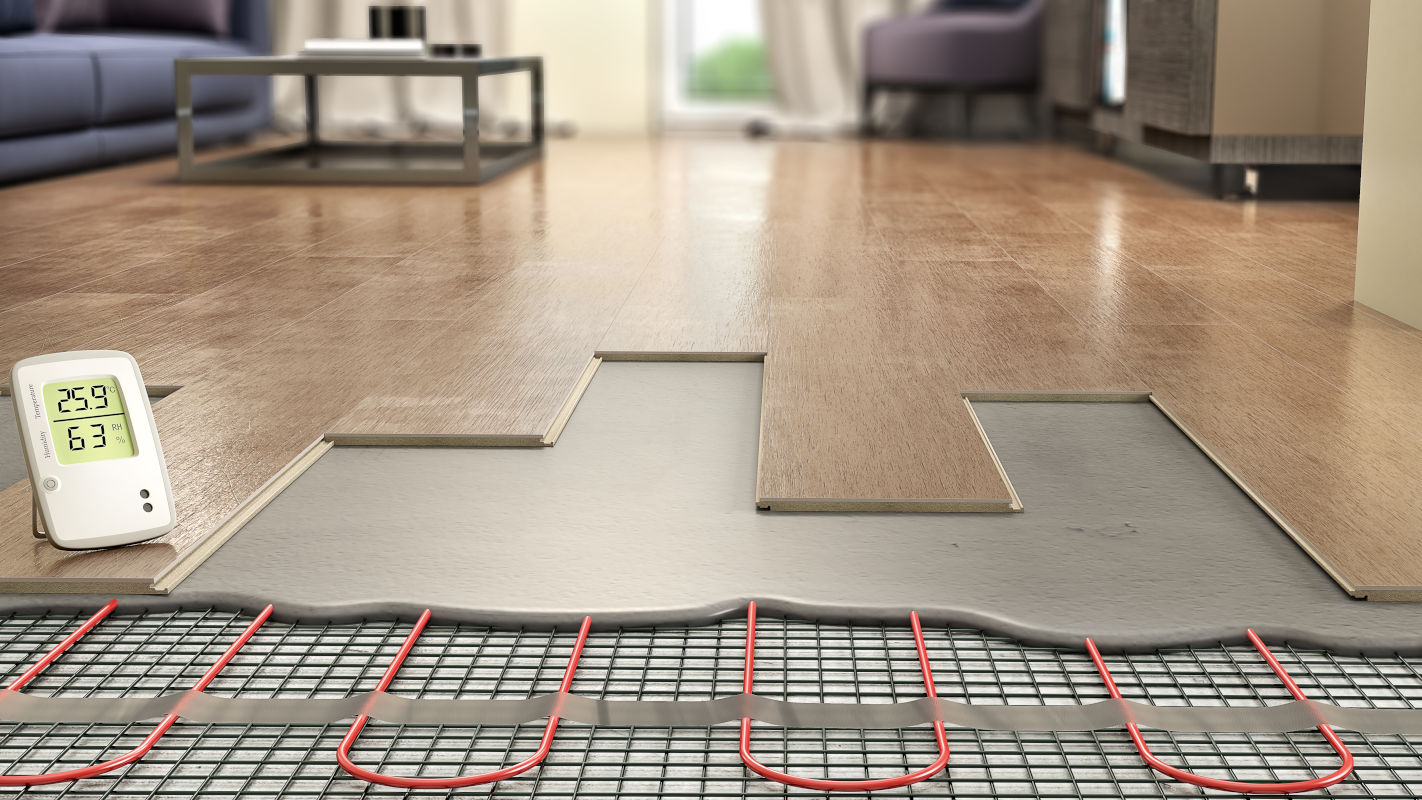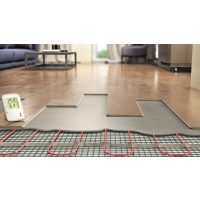- Home
- Blog
- Under Floor Heating
- Do Australian Houses Need Under Floor Heating
Do Australian Houses Need Under Floor Heating

When the winter months approach, you start to feel it in your home first. Your toes start getting colder, getting out of bed in the morning is more challenging, and stepping onto tile flooring sends a shiver up your spine.
While we can't hold back the winter tide, we can make your home a much more comfortable place to wait for the return of warmer months. With under tile heating, winters are about to become a whole lot cosier!
Here at Trade Warehouse, we have a full range of insulation and underfloor heating systems that keep you warm but are economical, easy to install, and kind to bare feet.
If you're still scratching your head and wondering what the best underfloor heating systems are for you, then don't panic. We're going to take you through all things underfloor heating so you're clear on the advantages, disadvantages, cost, and maintenance of your new heating systems.
Let's get started.
What is under floor heating?
Underfloor heating is a method of climate control in your house that uses primarily electrical embedded heating elements on the floor to achieve the desired temperature. This method is an excellent way of targeting cold spots in the home without running other heat sources.
It is recommended that you have either tile or any other ceramic type flooring as it allows for the most effortless transfer of heat.
How does under floor heating work?
Strap yourself in for a mini physics lesson. Like all other forms of heating, underfloor heating works by conduction and radiation. The under tile heating system spreads the warmth across the whole floor surface area at a low but constant temperature to keep the house comfortable. The electic heating cable in the sub-floor under your floor covering heats up the sub-floor and the heat is conducted into the floor covering (e.g. tiles). The floor surface becomes warm and heats the air which is in contact with the floor. As we know, hot air rises so the warmer air rises up and cooler air comes in contact with the warm floor which in turn heats up and rises.
The heating element warms a large surface area at a low temperature meaning that you can achieve the optimum temperature for your bathroom, kitchen, or wherever you install your tile heating kits.
How much does under floor heating cost?
We're going to split this into two categories: Cost of installation and cost of operation so you can make the most informed decision.
Cost of installation:
It is recommended you have a licensed electrician install the under floor heating system as you will need to connect the power source to the kit and install the thermostat and timers. Prices can vary depending on who you get, how large the area is and whether there are any specific electrical requirements needed in your individual circumstance.
Regarding the heating system itself, prices vary per square metre; for example, 1sqm of under tile heating cable costs around $400.00, whereas 6sqm costs around $800.00.
Running cost:
Electric underfloor heating uses between 200 and 3000 watts depending on the area and room it is heating. The actual runnings costs however will depend on a variety of factors such as, but not limited to, ceiling insulation, cavity wall insulation, sub-floor insulation, glazing (size and is it standard glass or double glazing), desired temperature and hours of usage. For budgetting purposes, you should find that it will be similar or slightly less than running a reverse cycle air conditioning unit. However if you have solar panels installed you can use these to power the floor heating throughout the day which will ensure you return home from work to a warm room which has been part funded by the sun.
What are some of the advantages and disadvantages of under floor heating?
So, you're clear on the technicalities, but what are some of the more concrete advantages and (the very few) disadvantages? Well, let's start with the obvious, no more radiators! Say goodbye to gathering dust and cluttered space because underfloor heating has got you covered.
Advantages of under floor heating:
- Installation Costs
The cost of installing under floor heating when building a house or rennovating a bathroom is fairly low when comparing with some other types of heating. - Systems Performance
Under floor heating also works with many materials, including laminate, ceramic, vinyl planking, stone, and timber floors. While you can technically use underfloor heating under the carpet below 1.5 tog, it isn't recommended as carpet could potentially hinder the system’s performance. - Slipping
Sick of slipping all over the bathroom after a shower? Are you scared of tearing a muscle from doing the splits out of the bath? Underfloor heating can help! Underfloor heating systems make quick work of evaporating any spillages from slippery surfaces, so it's great if you find that your bathroom becomes an ice rink in the mornings. - Maintenance Costs
Underfloor heating carries minimal maintenance costs because, well, you can't get to it. With a thermostat, most of the maintenance and running can be done from the click of a button, so say goodbye to expensive and inconvenient maintenance visits!
Disadvantages of under floor heating:
- Repair Access
The great thing about electric under floor heating is that there are no moving or mechanical parts which can wear out of break, so the chance of the under floor heating cable just stopping working is very low. However interventions from people accidentally drilling into the floor installing door stops or glass shower screen fixings can be an issue if the cable is damaged. Repair for under floor heating can awkward if the location of the issue is unknown or if the floor covering is difficult to remove and replace. The good news however is that very few people are drilling into their floors randomly. - Heat Restrictions For Some Flooring Types
99% of the time, your flooring option will be absolutely fine. For example, ceramic, porcelin, stone, vinyl and carpet are all suitable floor coverings. Wood is fine most of the time, however some manufacturers put limitation on the heat which a wooden floor should be exposed to. In these circumstances, you can set the thermostat to limit the floor heating temperature to ensure that you remain under the recommended level. The only floor coverings which are unsuitable are those which have rubber accoustic backings on them as this will prevent the heat transferring effectively and you will not notice the benefit of the floor heating.
Thankfully, there are far more pros than cons so that you can start your project with confidence. Why not check out our entire stock of underfloor heating systems for some inspiration!
Do I really need an electrician?
YES,YES and YES! Whilst the laying the floor heating mat is relatively straight forward and this can be done by anyone, when it comes to connecting it to the mains electricity supply, this MUST be done by a licensed electrician.
What tiles should use?
For those of us who frequent a hardware store, you will have noticed that some tiles are thicker and thinner than others, so you'll probably want to know what kind of tile thickness is best for under tile heating.
The good news is, tile thickness is unlikely to have any impact on the heat output, so you're still going to have toasty toes no matter the tile you use. However, using a thicker tile might slow down the time between turning on the heating mats and having toasty toes.
If you don't mind a few extra minutes, then don't sweat it, but it's worth keeping it in mind. Most tiles are around 10mm thick, so keep that as your ideal benchmark.
There you have it, your complete guide to underfloor heating! Before you go, make sure you check out our great selection of quality underfloor heating so you can brave the winter with warm feet and a smile!


